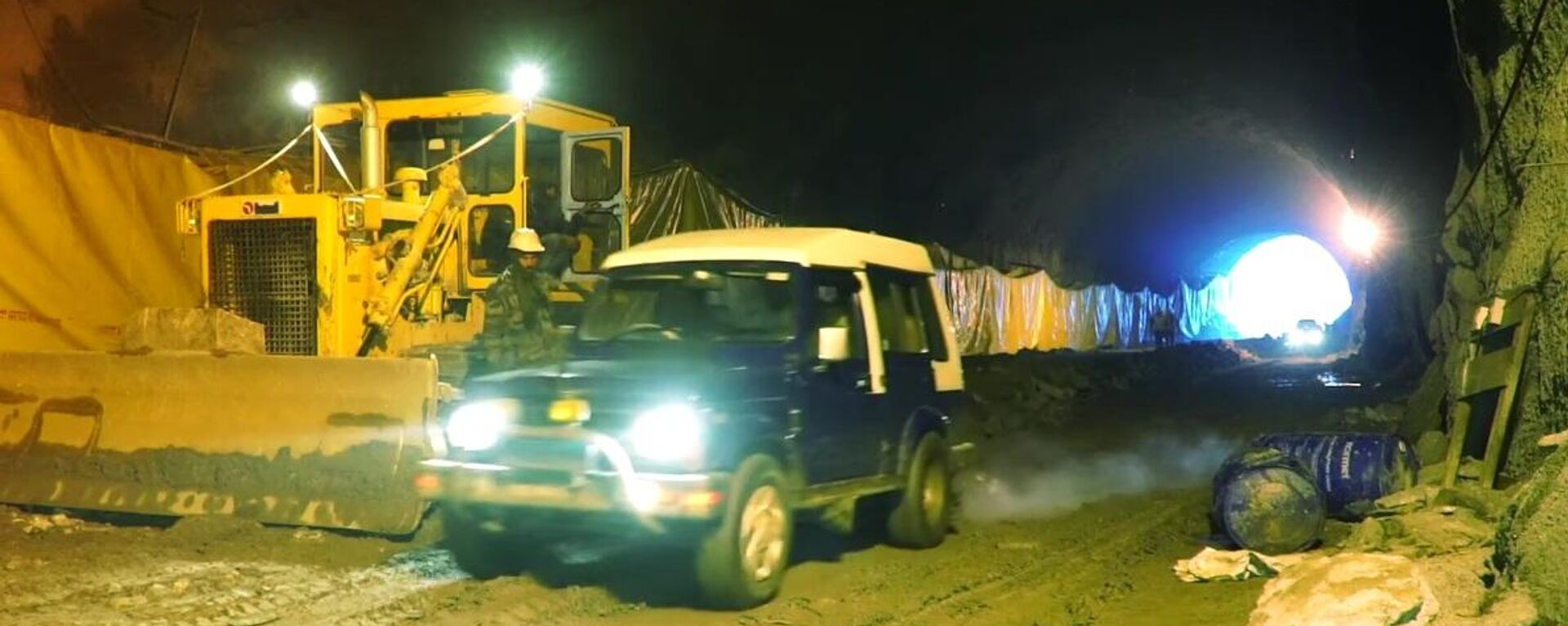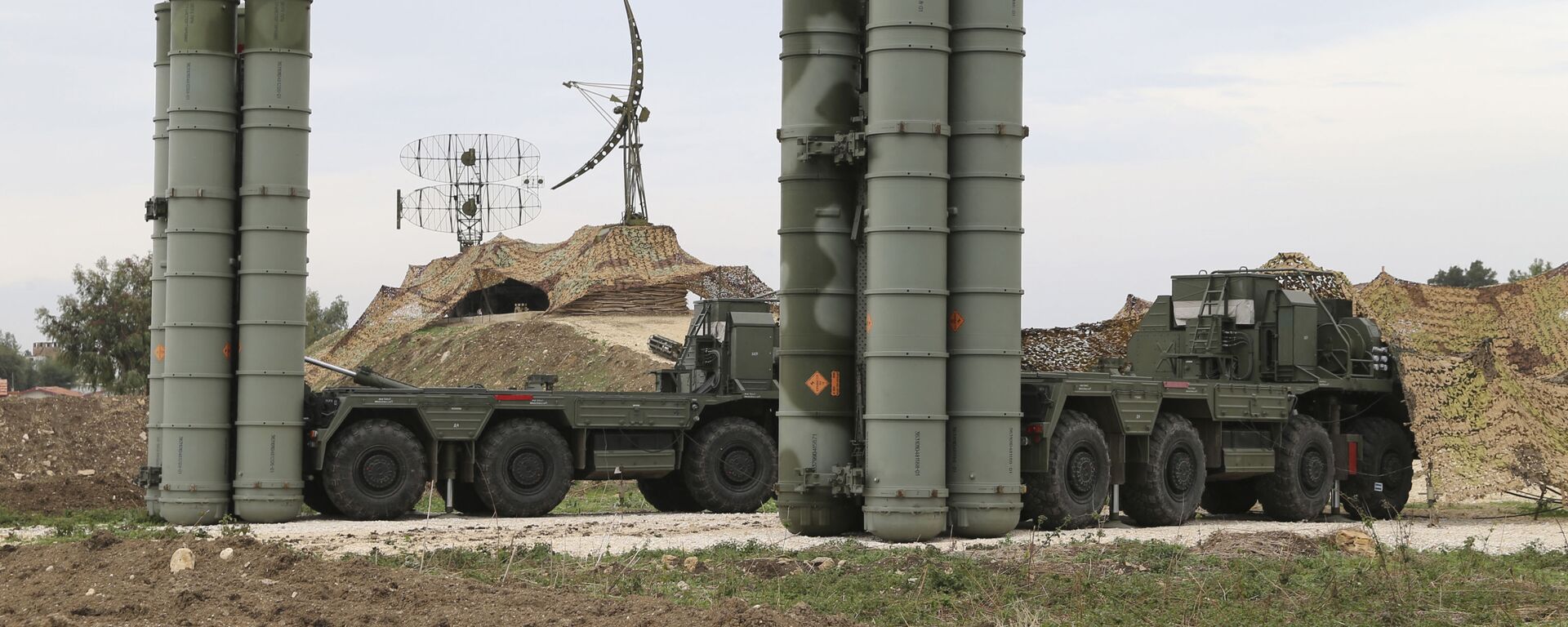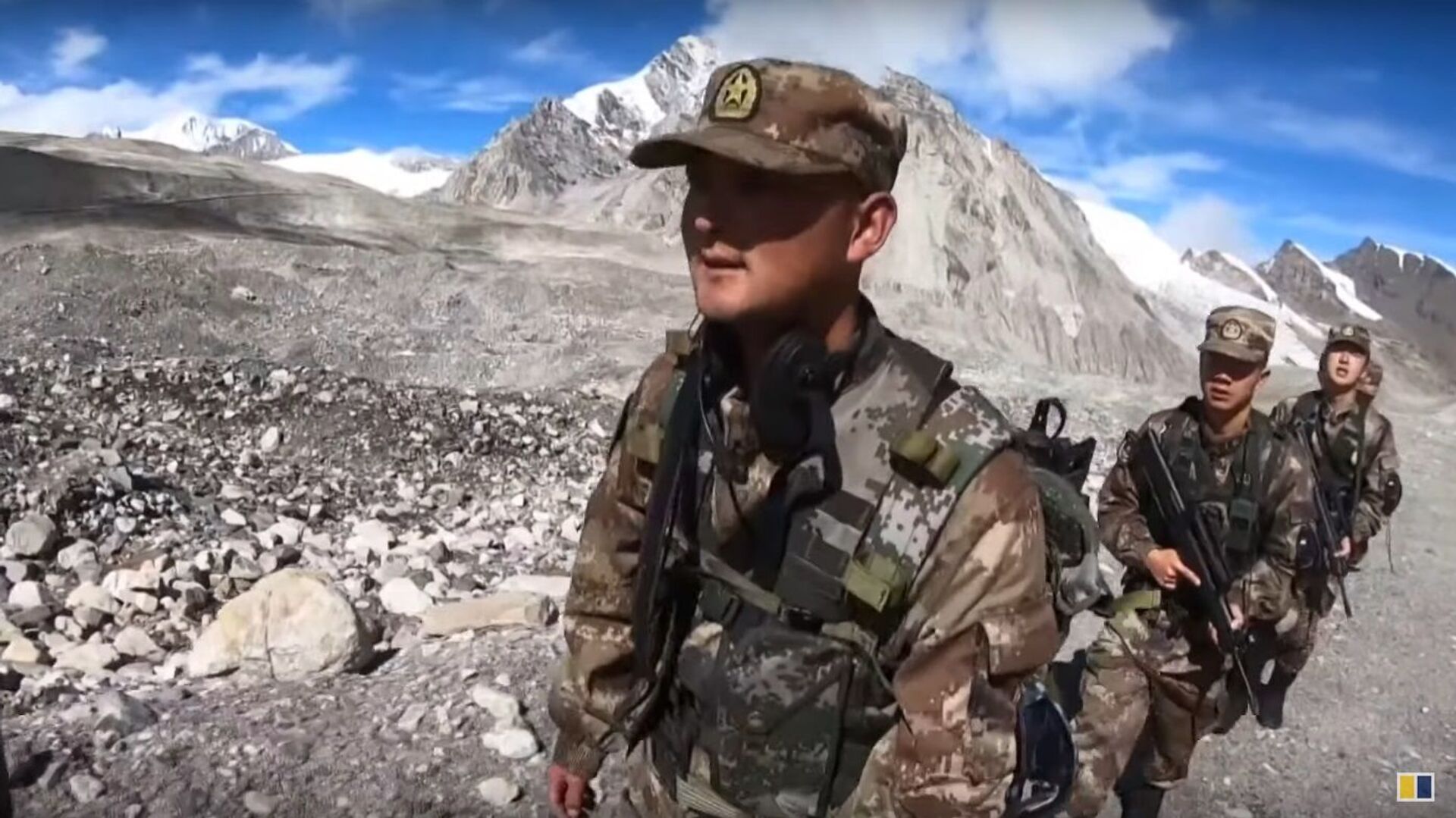https://sputnikglobe.com/20211019/chinas-pla-ramps-up-scale-military-drills-duration-near-arunachal-pradesh-indian-general-warns-1090029676.html
China's PLA Ramps Up Scale, Military Drills Duration Near Arunachal Pradesh, Indian General Warns
China's PLA Ramps Up Scale, Military Drills Duration Near Arunachal Pradesh, Indian General Warns
Sputnik International
The 3,488-kilometre-long India-China border has never been clearly demarcated. The two Asian giants have been embroiled in a deadly standoff in the western... 19.10.2021, Sputnik International
2021-10-19T10:28+0000
2021-10-19T10:28+0000
2021-10-19T10:28+0000
pla
ladakh standoff
china
indian army
https://cdn1.img.sputnikglobe.com/img/07e5/08/1b/1083729572_40:0:1436:785_1920x0_80_0_0_d8333e8756a84b789c67c073c5cf430b.jpg
The Chinese military has increased the “scale” and “duration” of its drills along the eastern sector of the disputed India-China border in Arunachal Pradesh since the eruption of a border row in the Ladakh region last May, Lieutenant General Manoj Pande, the head of the Indian Army’s Eastern Command, said on Tuesday.Pande said that the reserve formations deployed by the People’s Liberation Army (PLA) near the Arunachal Pradesh border were still present in the region. The remarks by one of India’s most senior army generals were made at a press conference in Arunachal Pradesh’s Rupa town, an army settlement.Arunachal Pradesh is administered by India as one of its states, but Beijing has never recognised New Delhi’s claims over the mountaineous region that borders the Tibet Autonomous Region (TAR).According to an Indian media report, PLA troops came face-to-face with Indian border guards at the Arunachal border this month before returning to their base - or bases - in the TAR.China last week raised objections to the visit of Indian Vice President M. Venkaiah Naidu to Arunachal Pradesh, as it warned New Delhi against taking any action that would “complicate and expand the boundary issue”.Lieutenant General Pande also claimed that even though there has been some “marginal increase” in patrolling activity by Chinese troops in some areas along the Line of Actual Control (LAC), the de facto - yet disputed - border, there wasn’t any “noticeable change” as far as the entire Eastern Command was concerned.One of the six operational formations of the Indian Army, the Eastern Command, is tasked with the defence of Indian territory from the state of West Bengal to the north-eastern tips of the South Asian nation. A large part of the India-China border falls within the jurisdiction of the Eastern Command.Pande also expressed concerns over new Chinese villages emerging in border areas in recent months, going on to describe them as part of the PLA’s “strategy model”.The Indian Army commander expressed confidence in India’s military preparedness to take on China in case of a “contingency”, pointing out that the world’s second-biggest military (by troop numbers) has been increasing its surveillance capabilities in the border region.He said that there has been an increase in the deployment of satellites, long-range unmanned aerial vehicles, intelligence, surveillance, and reconnaissance (ISR) systems and other capabilities by Indian troops at the Arunachal Pradesh border in recent months.Pande stated that the advanced military equipment, including drone, counter-drone, and precision-guided systems being used by the army at the Ladakh border were simultaneously inducted by the Eastern Command manning the eastern stretch of the India-China border.He also said that the Indian Army Mountain Strike Corps, a unit responsible for offensive operations along the LAC, was “fully operational”. According to a report, the Indian Army increased the strength of its only mountain strike division in June this year by adding 10,000 more troops. The unit is overseen by the Eastern Command.Pande’s remarks come against the backdrop of the more than a year-old military standoff between the two Asian powerhouses in the eastern Ladakh region, which was sparked due to the ramp-up of border infrastructure by the two countries amid competing territorial claims.While India has accused China of trying to “unilaterally” alter the status quo of the border region, Beijing says that its actions were triggered by New Delhi’s infrastructure activity in the region.The Ladakh border dispute remains unresolved despite 13 rounds of military commander-level talks between the two nations and several high-level exchanges involving the foreign ministers of the countries.
https://sputnikglobe.com/20211014/india-completes-excavation-work-at-strategic-all-weather-sela-tunnel-on-china-border-1089914915.html
https://sputnikglobe.com/20211012/deployment-of-s-400-by-china-at-ladakh-border-a-grave-threat-for-india-warns-opposition-1089868359.html
ladakh standoff
china
Sputnik International
feedback@sputniknews.com
+74956456601
MIA „Rosiya Segodnya“
2021
News
en_EN
Sputnik International
feedback@sputniknews.com
+74956456601
MIA „Rosiya Segodnya“
Sputnik International
feedback@sputniknews.com
+74956456601
MIA „Rosiya Segodnya“
pla, ladakh standoff, china, indian army
pla, ladakh standoff, china, indian army
China's PLA Ramps Up Scale, Military Drills Duration Near Arunachal Pradesh, Indian General Warns
The 3,488-kilometre-long India-China border has never been clearly demarcated. The two Asian giants have been embroiled in a deadly standoff in the western section of the Line of Actual Control since last year. There are fears that the entire border could become “live”, with Beijing doubling down on its claims over India’s eastern territories.
The Chinese military has increased the “scale” and “duration” of its drills along the eastern sector of the disputed India-China border in
Arunachal Pradesh since the eruption of a border row in the Ladakh region last May, Lieutenant General Manoj Pande, the head of the Indian Army’s Eastern Command, said on Tuesday.
"The annual training exercises that the PLA carries out… There is some increase in the level of activity… But that is in depth areas. Both sides are trying to develop infrastructure along the Line of Actual Control (LAC) and that leads to issues at times”, stated the Indian general.
Pande said that the reserve formations deployed by the People’s Liberation Army (PLA) near the Arunachal Pradesh border were still present in the region.
The remarks by one of India’s most senior army generals were made at a press conference in Arunachal Pradesh’s Rupa town, an army settlement.

14 October 2021, 10:57 GMT
Arunachal Pradesh is administered by India as one of its states, but Beijing has never recognised New Delhi’s claims over the mountaineous region that borders the Tibet Autonomous Region (TAR).
According to an Indian media report, PLA troops
came face-to-face with Indian border guards at the Arunachal border this month before returning to their base - or bases - in the TAR.
China last week raised objections to the visit of Indian Vice President M. Venkaiah Naidu to Arunachal Pradesh, as it warned New Delhi against taking any action that would “complicate and expand the boundary issue”.
Lieutenant General Pande also claimed that even though there has been some “marginal increase” in patrolling activity by Chinese troops in some areas along the Line of Actual Control (LAC), the de facto - yet disputed - border, there wasn’t any “noticeable change” as far as the entire Eastern Command was concerned.
One of the six operational formations of the Indian Army, the Eastern Command, is tasked with the defence of Indian territory from the state of West Bengal to the north-eastern tips of the South Asian nation.
A large part of the India-China border falls within the jurisdiction of the Eastern Command.
Pande also expressed concerns over new Chinese villages emerging in border areas in recent months, going on to describe them as part of the PLA’s “strategy model”.
The Indian Army commander expressed confidence in India’s military preparedness to take on China in case of a “contingency”, pointing out that the world’s second-biggest military (by troop numbers) has been increasing its surveillance capabilities in the border region.
He said that there has been an increase in the deployment of satellites, long-range unmanned aerial vehicles, intelligence, surveillance, and reconnaissance (ISR) systems and other capabilities by Indian troops at the Arunachal Pradesh border in recent months.
Pande stated that the advanced military equipment, including drone, counter-drone, and precision-guided systems being used by the army at the Ladakh border were simultaneously inducted by the Eastern Command manning the eastern stretch of the India-China border.
He also said that the Indian Army Mountain Strike Corps, a unit responsible for offensive operations along the LAC, was “fully operational”.
According to a report, the Indian Army increased the strength of its only mountain strike division in June this year by adding 10,000 more troops. The unit is overseen by the Eastern Command.
Pande’s remarks come against the backdrop of the more than a year-old military standoff between the two Asian powerhouses in the eastern Ladakh region, which was sparked due to the ramp-up of border infrastructure by the two countries amid competing territorial claims.

12 October 2021, 16:40 GMT
While India has accused China of trying to “unilaterally” alter the status quo of the border region, Beijing says that its actions were triggered by New Delhi’s infrastructure activity in the region.
The Ladakh border dispute remains unresolved despite
13 rounds of military commander-level talks between the two nations and several high-level exchanges involving the foreign ministers of the countries.





